Something went wrong!
Hang in there while we get back on track
Best attractions in Vienna
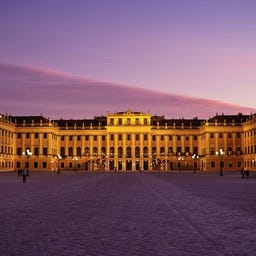
Once the magnificent summer residence of Maria Theresia, Emperor Franz Joseph, and his beloved Sissi, Schönbrunn Palace today captivates visitors from around the globe. With its sprawling gardens and rich imperial history, it has become Vienna's most popular attraction. The baroque masterpiece features over 1,400 rooms, of which around 45 are open for visitors, including:
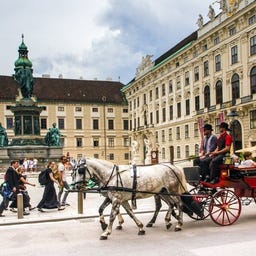
When you think of Vienna, Schönbrunn Palace and the historic center (the 1st District) immediately come to mind. Visit the Gothic St. Stephen’s Cathedral, steeped in legend, the imposing Hofburg, and the elegant shopping streets of Graben and Kärntner Straße. This is a neighborhood made for exploring – whether on a leisurely stroll, a romantic carriage ride, or over a cup of coffee in one of Vienna’s iconic coffeehouses.
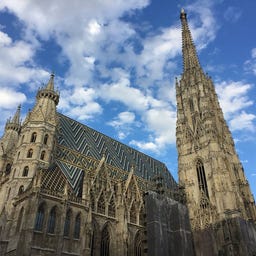
The Steffl, as the Viennese lovingly call St. Stephen’s Cathedral, is the famous landmark of Vienna. Its striking Gothic architecture, crowned by the 136 m tall South Tower, dominates the heart of Vienna. Legends surround its lengthy construction period, including one that claims the architect struck a deal with the devil to fund the project in exchange for his soul. Indeed, construction of the Gothic church spanned from 1304 to 1511, with the North Tower left unfinished due to the Turkish threat, allowing a shift in focus to defending the city.
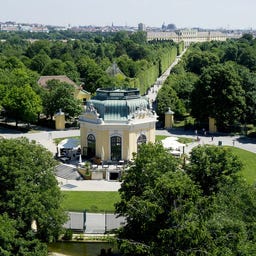
The Tiergarten Schönbrunn is not only the oldest operating zoo in the world (founded in 1752 by Emperor Francis I Stephen of Lorraine as an imperial menagerie), but has also been repeatedly voted the best zoo in all of Europe. This is thanks to the tremendous efforts of the zoo directors, who have gradually transformed the old cages into enclosures as close to nature as possible.
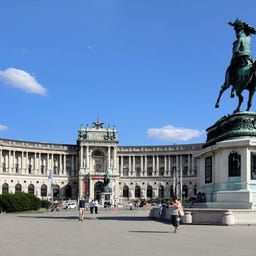
The Hofburg is a symbol of imperial splendor deeply rooted in the history of the Habsburg Monarchy. Originally built in the 13th century as a medieval fortress for the Habsburgs, the residence grew through continuous expansions into one of the largest palace complexes in Europe. This magnificent structure, developed over more than 700 years, combines Gothic, Baroque, and Neoclassical architecture and is a must-see highlight for all visitors to Vienna. Today, the Hofburg houses not only the offices of the Federal President but also renowned attractions such as:
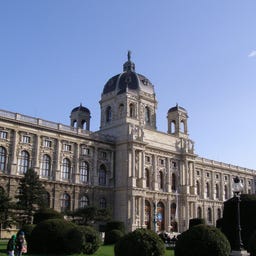
The Kunsthistorisches Museum (KHM) is one of the most significant and magnificent museums in the world, a must-visit for culture and art enthusiasts. Located at the Ring, between the Hofburg and the MuseumsQuartier, it impresses with its architectural splendor in the style of Italian Neo-Renaissance (built in 1891). The collections include masterpieces by Bruegel, Rubens, and Rembrandt as well as fascinating artifacts from antiquity and ancient Egypt. Particularly famous is the "Saliera" by Cellini, a treasure of the Kunstkammer Vienna. The museum's interior also captivates visitors with artworks by Gustav Klimt. A visit to the KHM should definitely be on your itinerary when traveling to Vienna.

The Vienna State Opera, constructed in the Neo-Renaissance style, transports visitors to another era with its elegant façade and opulent interiors. Since its opening in 1869 with Mozart’s Don Giovanni, the opera house has made music history and captivates audiences with around 350 high-quality performances annually. The guided tours, which offer a glimpse behind the scenes of one of the world’s most famous opera houses, are especially popular with tourists.
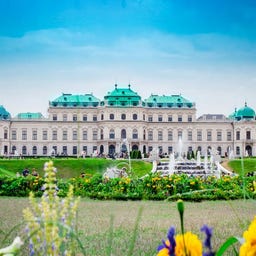
In the magnificent summer residence of the superstar Prince Eugene of Savoy, you’ll find one of Austria's most significant art museums. Here, you can explore Austrian art history from the Middle Ages to the 21st century. A particular focus lies on the Fin de Siècle and Art Nouveau periods, with the world's largest Gustav Klimt collection as its centerpiece.

The Natural History Museum Vienna is one of the largest and most significant collections in the world, boasting around 30 million objects that vividly document the diversity of nature and the history of our planet. Located at the central Maria-Theresien-Platz opposite the Art History Museum, the building impresses with its magnificent historicist architecture and a distinctive dome crowned by a statue of the sun god Helios. Highlights include:
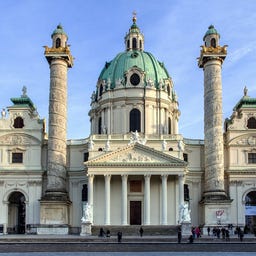
The Karlskirche, with its green dome and unique relief columns, is among the most significant sacred buildings in Central Europe. Commissioned by Emperor Charles VI in gratitude for the end of the 7th plague epidemic, the church was dedicated to St. Charles Borromeo, patron saint against epidemics. Designed by Johann Bernhard Fischer von Erlach, it was completed by his son and inaugurated in 1737 after 21 years of construction.
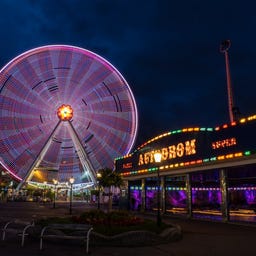
The Wurstelprater, known simply as the Prater, has been delighting visitors from around the world with its mix of nostalgia and thrills since the 18th century. Back in 1766, Emperor Joseph II opened the former imperial hunting grounds to the public, and since then, the Prater has become a popular destination for all. Today, the iconic Vienna Giant Ferris Wheel, built in 1897, serves as the park’s distinctive landmark, offering a stunning view of the city. (Just be patient, as the gondolas ascend at a leisurely pace.) With more than 200 attractions, from relaxed carousels and haunted houses to roller coasters and adrenaline-pumping rides like the 117-meter-high Prater Tower, the Prater is a favorite leisure spot for families, students, and adults alike.
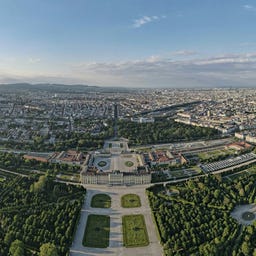
The palace park is a magnificent Baroque garden ensemble surrounding the former summer residence of the Habsburgs and part of the UNESCO World Heritage. It was designed in the French style in the early 18th century and later expanded under Maria Theresa. From the Gloriette with its splendid panoramic view of Vienna to the magnificent Neptune Fountain, the park is brimming with treasures. Artfully designed flower beds, sculptures, and fountains invite leisurely strolls, while the glass Palm House and the world’s oldest zoo captivate visitors of all ages. A walk through the small forest often reveals adorable squirrels.

The Albertina, one of Europe's most important art museums, is an absolute highlight for culture enthusiasts. Founded in 1776, it now houses over one million graphics and drawings by greats such as Dürer, Michelangelo, and Picasso, as well as masterpieces of painting from Monet to Matisse. Especially Dürer’s Hare is world-famous. Located in the Palais Erzherzog Albrecht and complemented by the modern Soravia Wing, the Albertina showcases all the major artists of modern and contemporary art history.
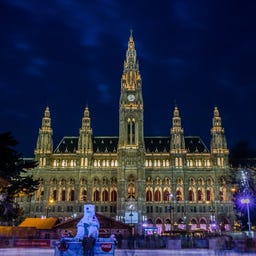
Along the Ringstraße, the Vienna City Hallsoars 103.3 meters into the sky. Constructed between 1872 and 1883 under the guidance of Friedrich von Schmidt, it’s inspired by the Gothic style of Flemish town halls yet incorporates Baroque elements with its seven arcaded courtyards. Following Emperor Franz Joseph’s command, the tower could not surpass the 99-meter-highVotive Church. However, the architect found a clever solution: he built the tower to 97.9 meters and crowned it with a statue, the Rathausmann!
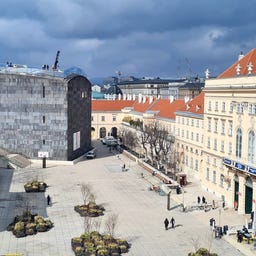
Between the historic baroque facades and modern buildings, you’ll find cozy cafés, lounge areas, and open courtyards that are particularly inviting in summer. Young people chat on the iconic MQ furniture, while a wealth of museums is right at your doorstep:
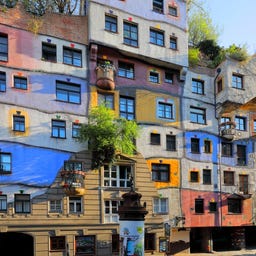
The Hundertwasser House in Vienna is a vibrant art piece that vividly showcases the vision of the extraordinary artist Friedensreich Hundertwasser. With its irregular shapes, bold colors, and lush greenery, it’s a striking architectural landmark. Built in the 1980s, this unique residential building embodies Hundertwasser’s dream of a harmonious connection between humans, architecture, and nature. Its balconies and rooftops host over 200 trees and shrubs, creating a green oasis in the heart of the city.

The Haus des Meeres is a unique Aqua Terra Zoo housed in a former flak tower from the Second World War. Over 11 floors, more than 10,000 animals from around 600 species, including sharks, rays, monkeys, and crocodiles, can be admired. A special highlight is the 360° shark tank on the 7th floor, offering views of these majestic sea creatures from every angle. On the top floor, the OCEAN SKY Restaurant entices visitors with its panoramic view of Vienna.
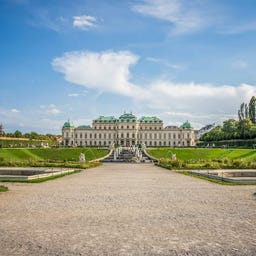
The Belvedere Garden in Vienna is a masterpiece of Baroque garden design and an enduring legacy of the Habsburg monarchy. Designed by Johann Lucas von Hildebrandt between 1714 and 1723 at the request of Prince Eugene of Savoy, the celebrated military commander, the expansive grounds captivate with their symmetrical layout and dramatic terracing, which elegantly emphasize the elevation differences between the Upper and Lower Belvedere. Today, the two buildings house the renowned Belvedere collections (incl. Klimt) and host temporary exhibitions.
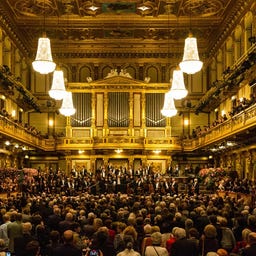
The Vienna Musikverein is not only one of the most prestigious concert halls in the world but also an architectural masterpiece. Built in 1870 by Theophil Hansenin the neoclassical style, the building resembles an ancient temple. Its most famous feature is the phenomenalGolden Hall, celebrated for its outstanding acoustics, which make it one of the best concert halls in the world. The acoustic perfection arises from a flawless combination of room proportions, wood paneling, and wall decorations, which create an unparalleled clarity and richness of sound.
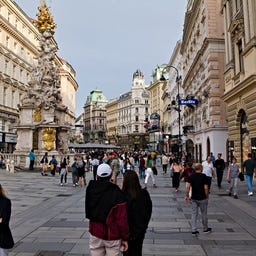
As a tourist, you simply can't miss the Graben, one of the city's most impressive promenades. Once a Roman defensive trench, you'll now find magnificent architecture, luxurious shops, and Viennese tradition here. Open your eyes and take a look around. Hardly anyone overlooks the baroquePlague Column, which commemorates the end of the plague epidemic in the 17th century, but pay special attention to the splendid buildings like the Grabenhof and the Ankerhaus.

Right next to the Ringstraße, you’ll step into the expansive, imperial Heldenplatz. Surrounded by the imposing Hofburg, the Outer Castle Gate, and two striking equestrian statues – Archduke Charles and Prince Eugene of Savoy – you can truly feel the grandeur of the Hofburg here. Today, the square often serves as a venue for events as well as political demonstrations.
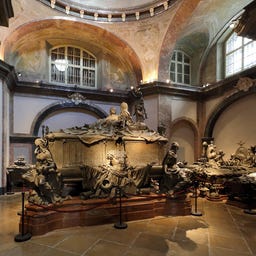
The Capuchin Crypt in Vienna, also known as the Imperial Crypt, is not only Austria's largest crypt in terms of area but also offers a deep dive into the history of the Habsburgs. Managed by the Capuchin Order since its establishment in the 17th century, it has served as the final resting place of this powerful dynasty for over 400 years. It houses the intricately designed sarcophagi of 12 emperors and 19 empresses, including Maria Theresa, Emperor Franz Joseph I., and the legendary Empress Elisabeth ("Sisi"). With over 150 members of the Habsburg family buried here, it is the second-largest crypt in the country, surpassed only by the Batthyány Family Crypt in Güssing.
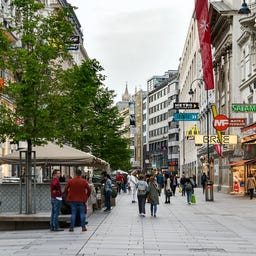
Already known in 1257 as an important trade route ("Strata Carintianorum") to Carinthia, the shopping street is now an elegant and popular pedestrian zone stretching from St. Stephen's Cathedral to the Vienna State Opera. Its magnificent architecture, ranging from historic palaces like Grundemann Esterházy to modern facades, reflects Vienna's transformation through the centuries.
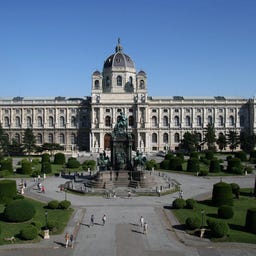
Between the two magnificent museums – the Art History Museum and the Natural History Museum – stretches Maria-Theresien-Platz. Whether you explore the collections of the outstanding museums, admire the extraordinary architecture on a leisurely stroll, or enjoy the festive atmosphere of the Christmas market in December, Maria-Theresien-Platz is one of Vienna’s highlights.
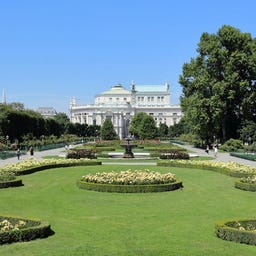
The magnificent Volksgarten is a wonderful place to take a breather amidst the many nearby attractions. Stroll among the 3,000 rose bushes featuring around 400 varieties of roses, and take a seat on one of the many benches. Here, you can truly relax in the sun surrounded by blooming flowerbeds. The park is also home to the elegant neoclassical Theseus Temple, a replica of the ancient Theseion in Athens, which today hosts events and exhibitions.
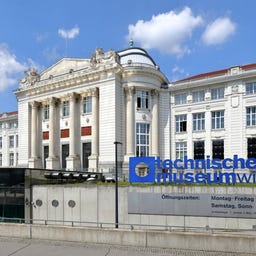
At the Technical Museum, the boundaries between past and future blur. Spanning over 22,000 m², you’ll discover interactive exhibitions, an impressive collection of large trains, vintage airplanes and vehicles, as well as exciting workshops for kids and teens, such as those featuring 3D printers.
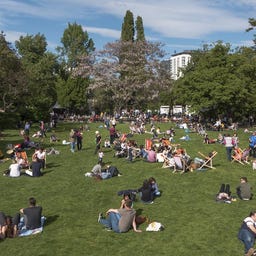
The Stadtpark, opened in 1862, is the oldest public park in Vienna and stretches like a green ribbon between the 1st and 3rd districts. It links the Ringstrasse to the U3/U4 station Landstrasse. Despite its popularity, the park remains a peaceful place for leisurely strolls, except during major events.
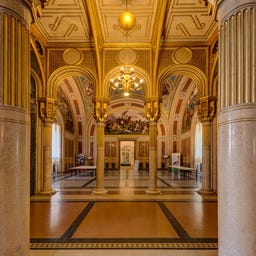
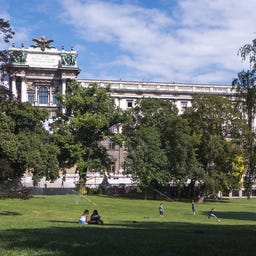
Directly behind the Neue Hofburg and the Albertina lies the idyllic Burggarten, a popular summer hangout for students. Originally designed in the 19th century as a private garden for Emperor Franz I, it now serves as a green oasis for locals and visitors alike. Impressive attractions such as the café in the Palmenhaus with its exotic plants, the charming Butterfly House, the statue of Wolfgang Amadeus Mozart, and a small pond with ducks invite you to linger.
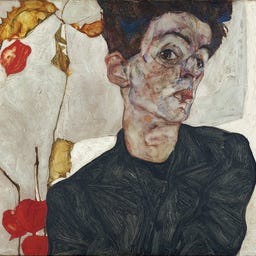
At the Leopold Museum, you can immerse yourself in the fascinating world of Viennese Modernism. The building, made of radiant white shell limestone, houses the world’s largest collection of works by the expressionist Egon Schiele, along with masterpieces by Gustav Klimt, Oskar Kokoschka, and other turn-of-the-century artists. On five floors, you’ll discover not only paintings but also handicrafts, furniture from the Wiener Werkstätte around 1900, as well as sculptures by Rodin and Lucian Freud.
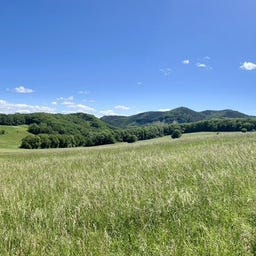
Between the dense deciduous forests of the Vienna Woods, you’ll find the perfect escape from Vienna’s hustle and bustle. Just a stone's throw from the capital, this forest (now a UNESCO biosphere reserve) is the beloved local retreat for Viennese residents. Whether you are climbing the highest peak, the Schöpfl at 893 meters, watching kite flying at Gießhübl, savoring a pleasant summer evening with a glass of Veltliner at a traditional Heuriger, or visiting the Heiligenkreuz Abbey – there are countless ways to relax here.
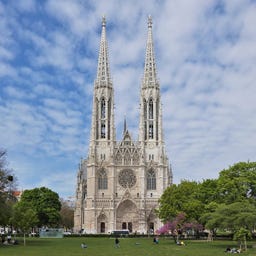
The neo-Gothic Votivkirche is one of Vienna’s most beautiful churches, surprising even locals with its remarkable history. Built between 1856 and 1879, it was created as an expression of gratitude for the survival of the young Emperor Franz Joseph I after an assassination attempt. In 1853, a Hungarian journeyman tailor attacked him with a kitchen knife, but the emperor’s life was saved by the courageous intervention of his adjutant. In response, his brother launched a donation campaign (Votivgabe), which was supported by 300,000 citizens. The church thus became a symbol of thanks for the emperor’s rescue.
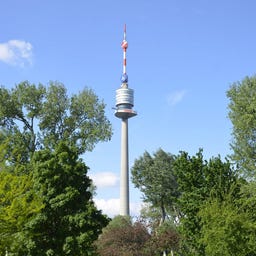
The Danube Tower, Austria's tallest attraction at 252 meters, rises as a gray column in the Donaupark of Vienna's 22nd district. Opened in 1964 for the Vienna Intern. Garden Show, the tower offers a unique experience: take the express elevator to the glassed-in observation deck at a height of 150 meters. From here, enjoy a breathtaking 360° view of Vienna and the Danube – from the city center to the vast landscapes of Lower Austria.
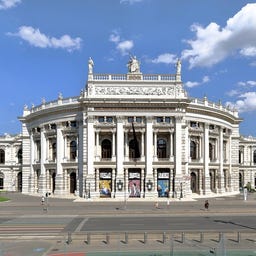
The Burgtheater, located directly on the magnificent Ringstraße opposite Rathausplatz, is a central venue for German-language stage art. Founded in 1741 by Maria Theresia and later relocated to its current site in 1888, the "Burg" captivates visitors with its opulent interiors and modern program.
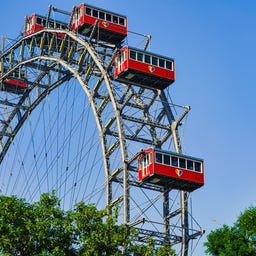
The Viennese Giant Ferris Wheel (Wr. Riesenrad) at the entrance to the Wurstelprater is one of Vienna’s most iconic landmarks. Built in 1897 to celebrate the 50th anniversary of Emperor Franz Joseph I’s reign, it was one of the largest Ferris wheels in the world at the time. Designed by British engineers Harry Hitchins and Hubert Cecil Booth and constructed by Walter Bassett, this technical marvel has become a symbol of the city. Today, with a height of 64.75 meters and its 15 distinctive red-and-white carriages, it offers breathtaking views of Vienna’s skyline and the Prater.(Be prepared for a leisurely pace, as the gondolas move slower compared to modern standards.) For a touch of romance, you can even book a special dinner experience in one of the carriages.

Rathausplatz, located along the Ringstraße opposite the Burgtheater, is a must-see during your visit to Vienna. Dominated by Vienna's City Hall, a masterpiece of neo-Gothic architecture from the late 19th century, the square impresses with its architectural beauty and vibrant events. From the famous Christkindlmarkt, with its enchanting lights and aromas, to the sparkling ice rink of the Vienna Ice Dream, and the Film Festival, which fills the summer with music and culinary delights, there’s always something happening here.
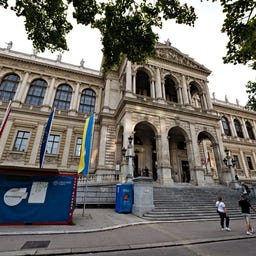
The University of Vienna, founded in 1365, is not only the largest university in the German-speaking world with 85,000 students but also the oldest. A visit to this stunning building is absolutely worthwhile. Located near the City Hall, the main building was designed by Heinrich von Ferstel in the style of the Italian Renaissance and opened in 1884. Climb the steps alongside hundreds of students and admire the richly decorated façade, the spacious staircases, and the artistic ceiling paintings.
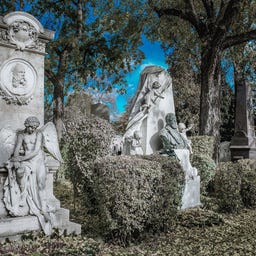
With its incredible size of 2.5 km², Vienna's Central Cemetery is larger than the city center and is home to over 3 million residents – more than the living population of Vienna. With its 1,000 honorary graves, Art Nouveau architecture, and sprawling grounds, the Central Cemetery is one of the most extraordinary sights in Vienna.
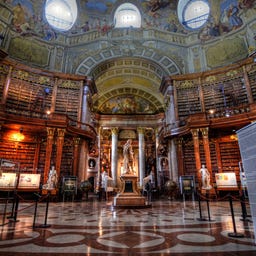
The National Library in the Neue Burg at Heldenplatz is not only Austria's largest library but also a breathtaking masterpiece of Baroque architecture. The most impressive highlight is the State Hall, a 77-meter-long room adorned with magnificent frescoes by court painter Daniel Gran, intricate woodwork, and marble statues. You’ll also notice the massive Baroque globes, each over 1 meter in diameter.
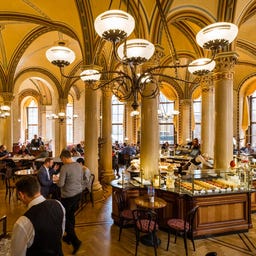
The Café Central is, despite its long queues, one of Vienna’s most popular attractions. With its marble columns, high vaulted ceilings, and Venetian flair, the Palais Ferstel exudes the elegance of Viennese coffeehouse culture.
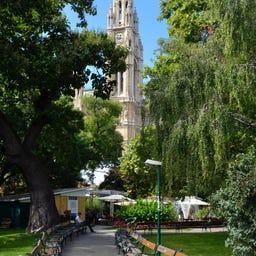
In the heart of Vienna, you’ll find the 40,000 square meter Rathauspark, which was created in 1873 under Mayor Cajetan Felder on the site of a former military parade ground. With its symmetrically arranged areas around two fountains and winding paths, the park today serves as a popular oasis of tranquility, also hosting urban events like the Eistraum and Adventzauber.

The Anker Clock at Hoher Markt is an intriguing Art Nouveau masterpiece. Since its completion in 1914, twelve historical figures – including Emperor Charles V, Prince Eugene of Savoy, Emperor Marcus Aurelius, Maria Theresa, and composer Joseph Haydn – pass one by one across the clock’s bridge every hour. (The bridge connects the buildings of the Anker Hof.)
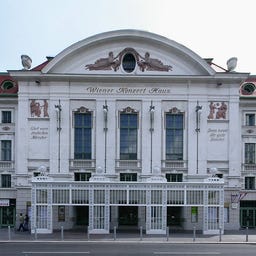
With its sumptuous blend of Art Nouveau and Historicism and acoustics that render even the subtlest sounds crystal clear, the Vienna Konzerthaus is a Mecca for music lovers. Since its opening in 1913, this gem has welcomed countless world-class artists such as Leonard Bernstein and Herbert von Karajan and remains one of Vienna's most treasured cultural landmarks.
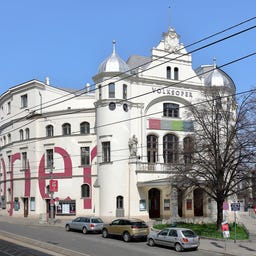
The Volksoper is a wonderful venue for anyone who enjoys classical performances but finds traditional opera too heavy. It's simply delightful to watch cheerful operetta classics like Die Fledermaus or The Merry Widow with their charming stage designs. Additionally, the program features captivating musicals and ballet, offering plenty of variety.
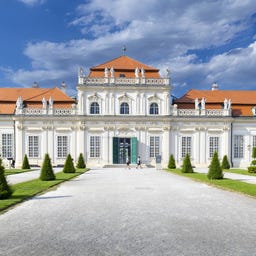
The baroque Lower Belvedere served as the summer residence of the legendary military commander Prince Eugene of Savoy. Built between 1712 and 1716 by Johann Lucas von Hildebrandt, the palace impresses with its elegant architecture. Today, it is a center for rotating art exhibitions, ranging from medieval treasures to contemporary works. Visitors can also explore the harmoniously designed gardens, which create a visual connection between the Lower and Upper Belvedere.
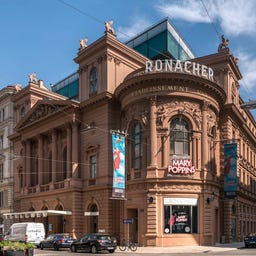
In the heart of Vienna's 1st district, you'll find the magnificent Ronacher, a true mecca for musical lovers. With around 1,000 seats, the historic yet elegant theater offers an intimate but spacious atmosphere, perfect for top-notch productions – from CatstoFalco – The Musical. Even John Malkovich graced this venue, performing as Casanova during the 2011 world premiere of The Giacomo Variations.
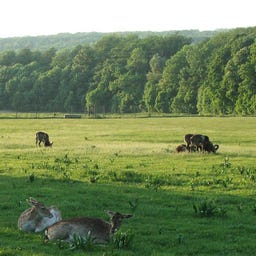
The former imperial hunting ground is now an idyllic nature reserve and a popular excursion destination in the southwest of Vienna. Established by Emperor Ferdinand I. in the 16th century, the wildlife park has been open to the public since 1919 and is home to numerous wild boars, red deer, and rare birds.
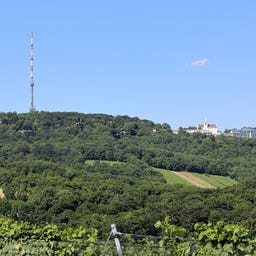
The Kahlenberg is a popular destination in the Vienna Woods, offering a breathtaking panoramic view of Vienna and the Danube. This spot has been historically significant for centuries: In 1683, Polish King Jan III Sobieski led the relief army to liberate Vienna during the Turkish siege from this very location.
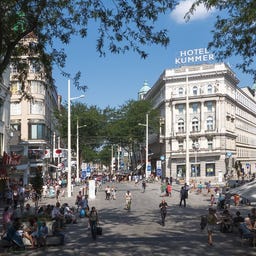
The Mariahilfer Straße is not only the longest shopping street in the city but also a vibrant hub full of life. Stretching over 1.8 km from Westbahnhof to the MuseumsQuartier, this paradise for shopping enthusiasts offers everything from international brands and a few resilient boutiques to the much-loved Bartolotti ice cream parlor, as well as some cafés and restaurants.
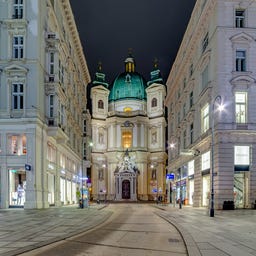
St. Peter's Church is a true Baroque gem, located just a few steps from the famous Graben. With its opulent dome reminiscent of St. Peter's Basilica in Rome and the magnificent frescoes by Johann Michael Rottmayr, it is one of the most beautiful sacred buildings in Vienna.
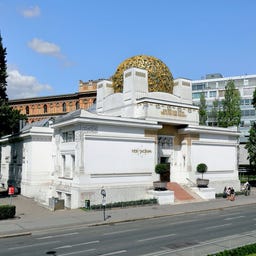
With its distinctive golden dome, affectionately called "Krauthappel" by the Viennese, the Secession building is one of the most significant examples of Austrian Art Nouveau. Constructed by Joseph Maria Olbrich as an exhibition house between 1897 and 1898, the building still proudly displays its famous motto "To every age its art, to art its freedom" in golden letters.
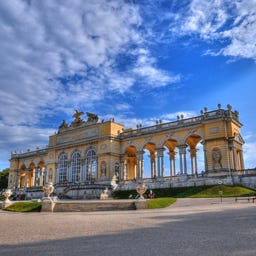
High atop the gentle hill of the Schönbrunn Palace Park stands the Gloriette, an early Neoclassical masterpiece built in 1775 as the crowning feature of the magnificent garden complex. Its triumphal arch-inspired central section, flanked by delicate arcades with round arches and crowned by the imposing imperial eagle, was conceived as a viewing platform and monument to the glory of the Habsburg dynasty. Later, the glazed interior often served as a dining and banquet hall, including use as a breakfast room for Emperor Franz Joseph I.
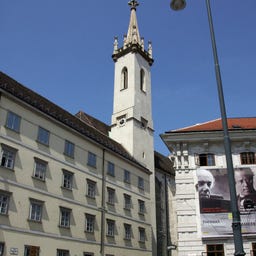
The simple Gothic Augustinian Church in the heart of Vienna hides an impressive history behind its unassuming facade as the former court church of the Habsburgs. Here, not only Maria Theresa and Franz of Lorraine exchanged vows, but also Emperor Franz Joseph and Sisi, while in the heart crypt behind the Loreto Chapel, the hearts of 54 Habsburgs found their final resting place.
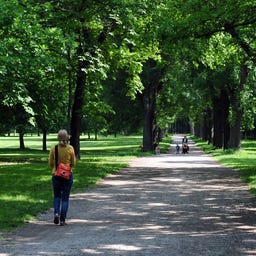
In the Wiener Prater, which spans over 6 km², you can expect much more than just the famous Wurstelprater with its iconic Ferris wheel.
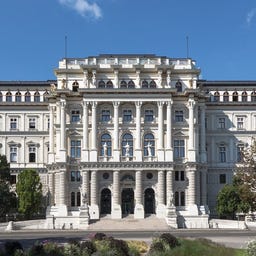
In the impressive Palace of Justice from the late 19th century, you will find one of the most striking court buildings in Vienna, designed by architect Alexander Wielemans von Monteforte in the Neo-Renaissance style.
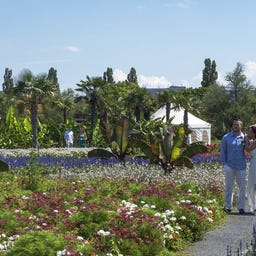
The Blumengärten Hirschstetten are a charming little oasis in Vienna’s 22nd district. Here, you’ll find vibrant themed gardens, including an exotic Indian garden, a Mexican paradise, a historic farmhouse, and a waterlily pond with a sandy beach. One of the highlights is the lovingly designed tropical corner inside the palm house.
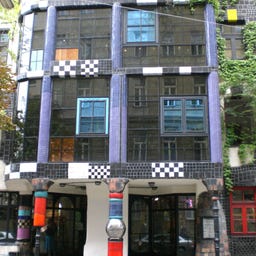
At the KunstHausWien, a former furniture factory from the 19th century, you can explore the only permanent exhibition of works by Friedensreich Hundertwasser in the world. Opened in 1991, the museum impresses with its distinctive architecture featuring uneven floors, colorful ceramics, and integrated green spaces, all in the artist's signature style.
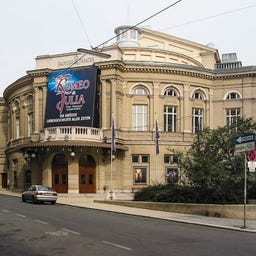
The Raimund Theater transports you into the magical world of musicals. For over 100 years, this magnificent venue has been captivating audiences with its blend of Art Nouveau architecture and cutting-edge stage technology. Today, it is recognized as one of the leading musical stages in Europe, showcasing unforgettable productions like The Phantom of the Opera and Dance of the Vampires, both renowned for their spectacular sets and incredible music.
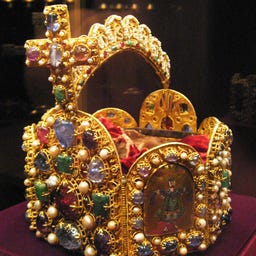
The Imperial Treasury is easy to miss, as it is tucked away in the rather modest Schweizerhof of the Hofburg. However, anyone wanting to get a sense of the immense wealth of the Habsburg Empire will gladly spend two to three hours here.
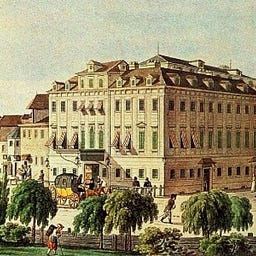
The Theater an der Wien, which opened in 1801, is one of the few remaining suburban theaters from the 18th century and has a rich history, having hosted world premieres by Beethoven and Strauss.
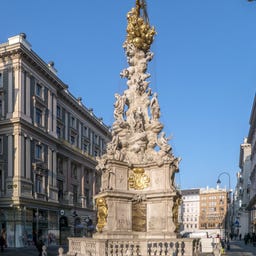
Right in the middle of the famous Graben in Vienna's city center stands the magnificent Plague Column, an unmistakable masterpiece of High Baroque art. It was erected in 1693 by order of Emperor Leopold I. as a thanksgiving for the end of the devastating plague epidemic of 1679. In doing so, the emperor fulfilled the vow he had made during his flight from Vienna.

In the historic Palais Erzherzog Carl, where Otto Nicolai founded the Vienna Philharmonic, you can expect a fascinating sound experience across 5000 m² today. The interactive sound museum spans four floors and cleverly combines traditional exhibition elements with modern multimedia installations.

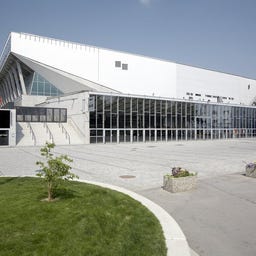
The Wiener Stadthalle is Austria’s largest event venue and a true cultural landmark in the heart of Vienna. With a capacity of up to 16,000 visitors per event and six versatile halls, it serves as the stage for world-class concerts, shows, and sporting events.
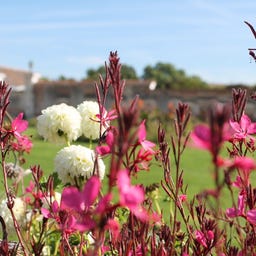
In Vienna's oldest Baroque garden, you can explore a fascinating blend of well-kept flower beds and shady avenues lined with centuries-old trees across more than 52 hectares. The Augarten, opened to the public in 1775 by Emperor Joseph II., is home not only to the magnificent Augarten Palace and the famous Porcelain Factory, but also to notable flak towers from World War II.

The Therme Wien in the Vienna district of Oberlaa is one of the largest thermal spa facilities in Austria, covering a total area of 75,000 m². On this expansive site, you can enjoy nearly 4,000 m² of water surface, a spacious sauna world, and modern fitness and health areas.
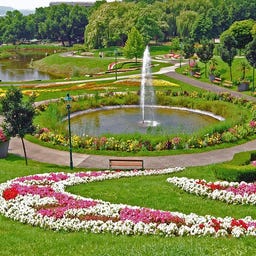
In the expansive Kurpark Oberlaa, you’ll find a diverse park landscape spanning over 600,000 square meters, featuring thematic gardens that originated from the "Vienna International Garden Show 1974." The park offers not only an accessible playground and a petting zoo but also special attractions like the informative Allergy Garden and the newly designed Japanese Garden from the 1990s. In summer, part of the area transforms into an open-air cinema, showcasing silent film classics—a tradition that dates back to the 1920s when silent films were already being shot here. Nature lovers can explore over 11,500 perennials from 90 different species in the Perennial Garden, while the romantic Love Garden is a popular spot for wedding photographers.
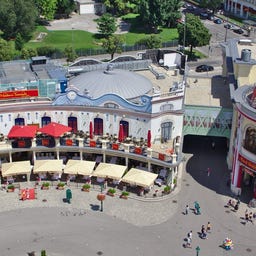
In the heart of the legendary Wiener Prater, you can find one of the youngest branches of the world-famous wax museum Madame Tussauds, which has been welcoming visitors since 2011. Over three floors, you will encounter more than 90 incredibly lifelike figures from history, politics, art, sports, and entertainment.
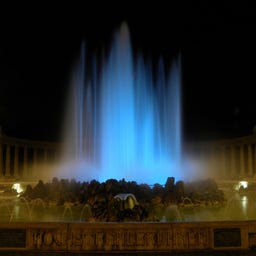
The impressive high fountain at Vienna's Schwarzenbergplatz was inaugurated in 1873 in the presence of Emperor Franz Joseph I. and marked the completion of the first high spring water pipeline. With its 365 small jets—one for each day of the year—along with additional streams for months, weeks, and hours, it is not only a technical masterpiece but also a fascinating symbol of time.
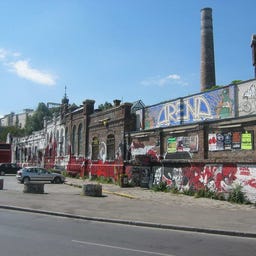
In a former slaughterhouse in the industrial area, you’ll find Vienna's most famous alternative cultural center today. Arena Wien was established in 1976 through a months-long occupation, where even Leonard Cohen performed, and officially settled at its current location in 1977.
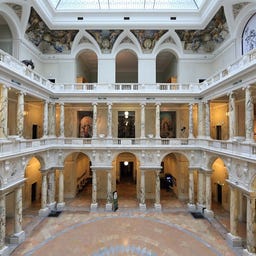
It's all about people.
The Weltmuseum Wien is an ethnographic museum and houses some of the most important collections of non-European cultures. The most popular and famous exhibit is the Quetzal feather headdress from Mexico. It is the last known example of its kind worldwide.
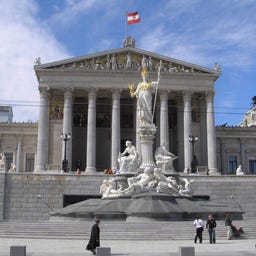
The Austrian Parliament is one of the most impressive buildings on Vienna's Ringstrasse and a masterpiece of Greek classicism. Designed by renowned architect Theophil Hansen in the 19th century and inspired by antiquity, the building symbolizes the roots of democracy. The magnificent Pallas Athena Fountain in front of the entrance and the imposing Hall of Pillars are particularly stunning.
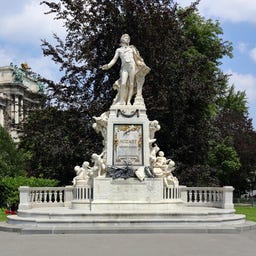
In the heart of Vienna, the impressive Mozart monument rises in the Burggarten, a 7.5-meter tall artwork made of light Laaser marble and dark diorite. Created by Viktor Tilgner and Karl König, the monument depicts the composer at a music stand, surrounded by intricate reliefs from "Don Giovanni" and playful cherub figures.
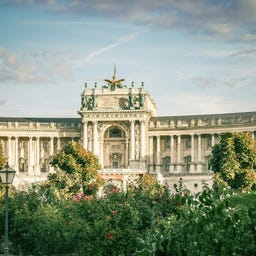
As the youngest part of the Vienna Hofburg, the Neue Burg showcases a magnificent Neo-Renaissance style, with construction spanning from 1881 to 1913. Behind its impressive facade, adorned with 20 historical figures and flanked by monumental equestrian statues of Prince Eugene of Savoy and Archduke Charles, lies a fascinating museum quarter.
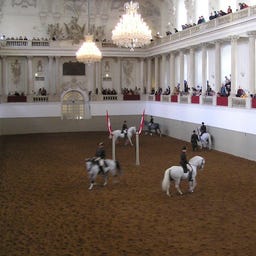
The Spanish Riding School is a place where the art of classical horsemanship is celebrated. For over 450 years, the tradition of the Lipizzaner horses has been preserved here – those majestic creatures renowned worldwide for their precise movements and signature white coats. In the baroque splendor of the magnificent Winter Riding Hall, you can attend either a morning training session or a performance.
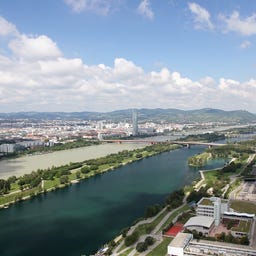
The Danube Island is one of the most popular recreational areas for Viennese residents and also one of Europe’s most important flood protection systems. Constructed as an artificial island between 1972 and 1988, it stretches 21 kilometers long and up to 250 meters wide, offering endless opportunities for sports and relaxation.
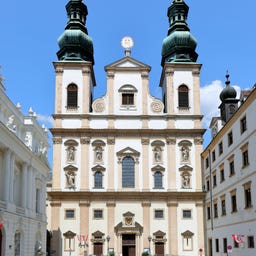
The magnificent Jesuit church in the heart of Vienna's old town impressively combines baroque architecture with optical illusions. Built in the early 17th century, the sacred building was redesigned in the high baroque style by Andrea Pozzo in 1703 and captivates with its artistically painted false dome.
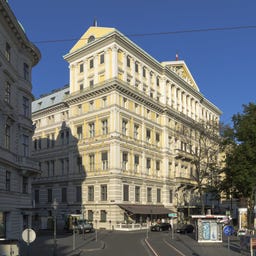
As a former city palace of the Duke of Württemberg, the Hotel Imperial has been standing since 1873 in Italian Neo-Renaissance style on the Ringstraße and has since been regarded as one of Vienna's top addresses. In its opulent rooms adorned with Carrara marble and intricate stuccos, historical figures such as Otto von Bismarck and Richard Nixon, as well as artists like Frank Sinatra and Alfred Hitchcock, have stayed over the years.
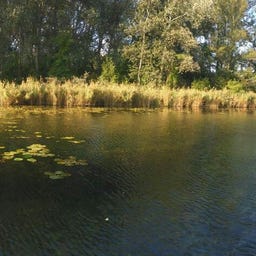
On the eastern outskirts of Vienna stretches the Lobau, one of the last remaining floodplain landscapes in Central Europe and a true paradise for nature lovers. As part of the Danube-Auen National Park, the Lobau invites you to explore its well-marked trails that wind through dense forests, serene waterways, and idyllic meadows. Whether you prefer hiking, cycling, or simply unwinding in nature, this tranquil escape makes it easy to leave the stress of daily life behind.
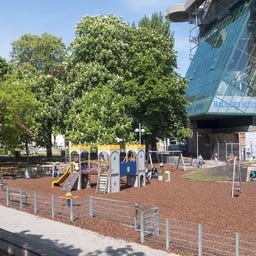
In the historic Esterházypark in the 6th district of Vienna, Mariahilf, you can expect an exciting mix of history and modern leisure activities. The park, established in the 18th century and named after the Esterházy family, features not only a striking chestnut avenue and four protected Baroque statues but also an impressive flak tower, which now houses the Haus des Meeres.
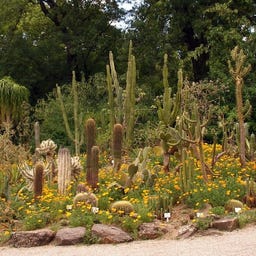
In the historic Botanical Garden of the University of Vienna, you will find a green oasis with over 11,500 plant species spread across 8 hectares. Founded in 1754 as a medicinal herb garden and expanded under Maria Theresa, the Hortus is now not only a research facility but also a popular recreational area offering free guided tours in the summer.
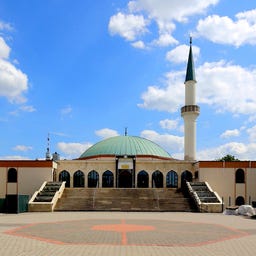
As the first representative mosque in Austria, the Islamic Center Vienna has been shaping the skyline of Floridsdorf since 1979 with its 32-meter-high minaret and impressive 20-meter dome. The sacred building, designed by Austrian architect Richard Lugner, was ceremoniously opened after four years of construction in the presence of the then Federal President Rudolf Kirchschläger.
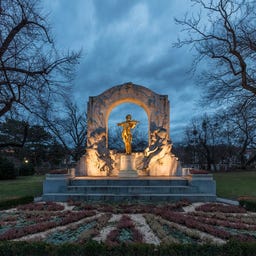
In the heart of Vienna's Stadtpark, you will find one of the most photographed monuments in the city: the gilded bronze statue of the "Waltz King" Johann Strauss II with his characteristic violin. Unveiled in 1921, the monument rests on a marble pedestal, framed by an arch of Laaser marble intricately decorated with leaves and floating couples.
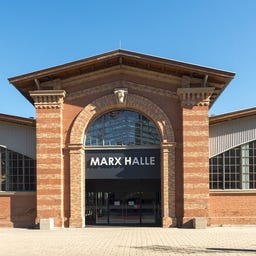
Built in 1877 as the central cattle hall for the city's livestock market, this historic landmark is now Vienna's only preserved wrought-iron structure. With 20,000 m² of versatile space, it hosts a wide variety of events: from concerts and art exhibitions to vibrant themed markets, theatre performances, and trade fairs – including the Pet Fair Vienna and the Pompeii Immersive Experience.
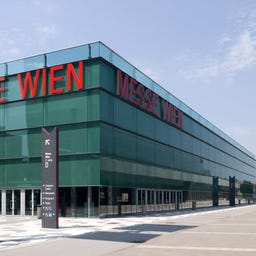
The Vienna Fair is the most important exhibition venue in Austria, with 55,000 m² of exhibition space, and has been shaping the economic landscape of the capital since 1921. The striking 96-meter-high exhibition tower, with its distinctive cylindrical shape, has long become a modern landmark of the 15-hectare site in the Leopoldstadt district.

The church at Steinhof, designed by Otto Wagner, is one of the most significant buildings of Viennese Art Nouveau and impresses with its golden dome, which has earned the area the nickname "Lemoniberg." As part of a former psychiatric clinic, it was designed between 1904 and 1907 with special consideration for the needs of the patients, including separate entrances for men and women and specific hygiene facilities.

The impressive Soviet War Memorial at the southern end of Schwarzenbergplatz features a 20-meter-high column and a semi-circular colonnade, commemorating the approximately 17,000 Soviet soldiers who fell during the Battle of Vienna in 1945. This monumental structure, made from 15 tons of bronze and 300 square meters of Engelsberger marble, is topped by a soldier figure holding a flag and a gilded Soviet emblem.
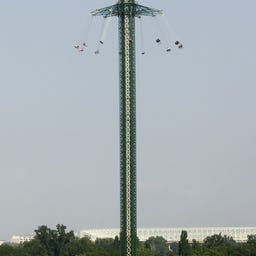
The 117-meter-high Prater Tower in the Wiener Wurstelprater is an impressive chain carousel that takes you up to a height of 95 meters. With its gleaming golden onion dome, three large clocks, and 1,200 LEDs, the tower is a real eye-catcher even at night. In the twelve double seats that spin at speeds of up to 60 km/h, you can enjoy breathtaking views of Vienna during the three to four-minute ride. Operated by Walter Pondorfer, the Prater Tower was the tallest chain carousel in the world from its opening in May 2010 until 2013.
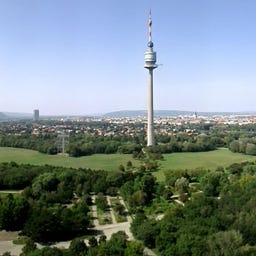
In the expansive Danube Park in the 22nd district, you’ll find a green oasis spanning over 630,000 m², which has long left behind its tumultuous history as a former shooting range and landfill. The most prominent landmark is the Danube Tower, which opened in 1964 and majestically rises above the park landscape.
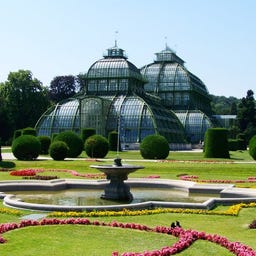
In the impressive Palm House of Schönbrunn Palace, you will find one of the three largest greenhouses in the world, which has housed botanical treasures since 1882 under the reign of Emperor Franz Joseph I. The stunning iron structure stretches over 111 meters in length and today is home to around 4,500 different plant species, including a 350-year-old olive tree and the rare Wollemi pine – a "living fossil" discovered only in 1994.
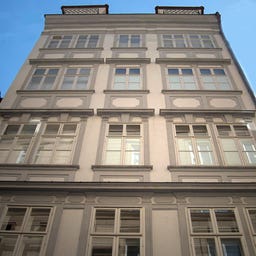
In the Mozarthaus Vienna, you can visit the only remaining apartment in Vienna where Wolfgang Amadeus Mozart lived from 1784 to 1787, during which he composed works like "Le Nozze di Figaro." The building, originally from the 17th century, now houses a modern museum spread over five floors, bringing Mozart's life and work to life through multimedia installations.

St. Stephen's Square is the geographical and urban center of Vienna, dominated by the majestic St. Stephen's Cathedral, which dates back to the 12th century. As a pedestrian zone, the square connects important streets like Graben and Rotenturmstraße and has served as a central location for public events since the 14th century.
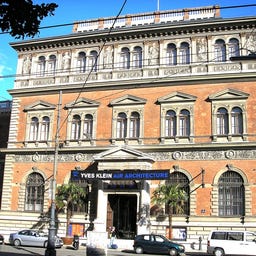
In the impressive Neo-Renaissance building on Stubenring, constructed in 1871 by Heinrich von Ferstel, you will find one of the most significant collections of applied arts and design in the world. Founded in 1863 by Emperor Franz Joseph I., the museum now houses over 300,000 objects, blending historical craftsmanship with contemporary design, particularly showcased in the MAK Design Lab that opened in 2014.
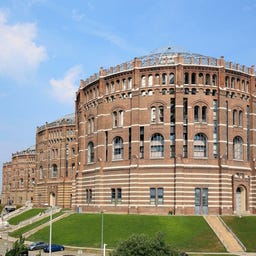
The four distinctive gasometer towers in the 11th district of Simmering are among the most unusual industrial monuments in Vienna. Built at the end of the 19th century, they were once the largest gas tanks in Europe and supplied the city with gas until 1984.
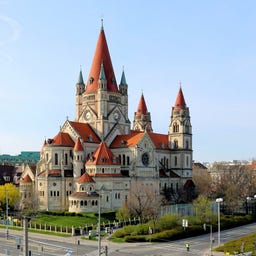
The impressive Franz von Assisi Church at Mexikoplatz captivates with its distinctive three-towered silhouette, rising up to 73 meters into the Viennese sky. Built in the Rhenish-Romanesque style, this brick structure was completed in 1910 and was originally intended to commemorate the 50th anniversary of Emperor Franz Joseph I. That's why it's also known as the Imperial Jubilee Church. Inside, you'll find not only a remarkable altar but also two paintings by the Italian artist Ettore Gualdini and a significant Rieger organ with 56 registers. The adjacent Elisabeth Chapel surprises with Art Nouveau decorations and intricate mosaics, including a large depiction of Saint Elizabeth of Hungary.
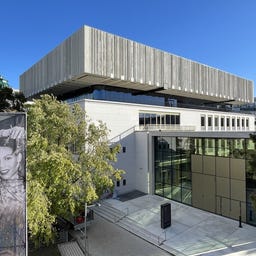
After four years of renovation, the Wien Museum at Karlsplatz has been shining in a new light since December 2023 - with double the exhibition space and free entry to the permanent exhibition.

At the elegant Berggasse 19, you dive into the authentic world of the founder of psychoanalysis - this is where Sigmund Freud lived and practiced from 1891 until his forced emigration in 1938. The museum in his former practice and apartment showcases not only original rooms like the waiting area across 550 square meters but also parts of his impressive collection of ancient artworks.
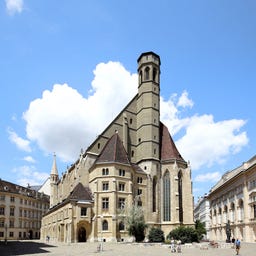
The church, founded by the Minorites in the 13th century, is one of the first Gothic sacred buildings in Eastern Austria and impresses with its distinctive French-inspired architecture, including a 54-meter high west gable. Since 1784, it has served as the spiritual home for the Italian-speaking community of Vienna as the Italian national church Maria Schnee.
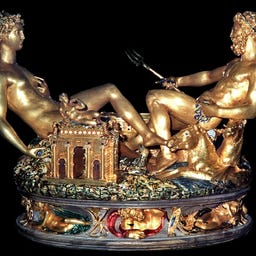
At the Kunsthistorisches Museum Vienna, you can admire the Saliera, the only surviving goldsmith work by the Italian master Benvenuto Cellini from the 16th century. This intricately designed salt container, made of gold and enamel, was created between 1540 and 1543 for the French King Francis I. It features allegorical figures of the sea god Neptune and the earth goddess Tellus.
